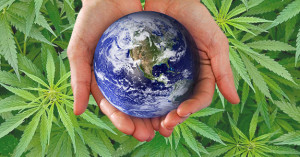 One of the most underrated aspects of industrial hemp is its use for land reclamation and remediation. Below are excerpts from a very insightful report written by T.J. Cole for Messiah College. With the combination of brilliant young minds and this type of vision for hemp, we will help ensure a greener, healthier and sustainable future for all of us. The full report here. PAHIC is committed to exploring and promoting all of the positive environmental uses for hemp.
One of the most underrated aspects of industrial hemp is its use for land reclamation and remediation. Below are excerpts from a very insightful report written by T.J. Cole for Messiah College. With the combination of brilliant young minds and this type of vision for hemp, we will help ensure a greener, healthier and sustainable future for all of us. The full report here. PAHIC is committed to exploring and promoting all of the positive environmental uses for hemp.
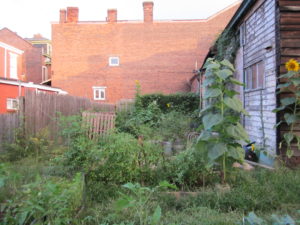 While it is universally known in sustainability that urban areas lack access to healthy, local food, and green space, few people outside the field seem to know amelioration tactics. Brownfields redevelopment has long been accepted as a means of urban restoration, but it hardly seems to hold true to a scientific dogma. “Gary”, Executive Director of an urban farm non-profit in Pennsylvania, claims to have spent several years adding organic material to his vacant lots and eventually bringing in his own topsoil. With the introduction of all this topsoil, those that work the land require the right storage space for tools on these vacant lots to appropriately restore this land. Some have mentioned storage shed columbia sc could provide some useful garden storage solutions here. When working the land, we imagine “Gary” decided to build his method around what he could work the land with. Though this method worked, and “Gary’s” farm has flourished immensely, it does not seem to have been the most efficient means of conditioning a dilapidated and contaminated soil plot for vegetative growth. With the right tools and determination, anything is possible. Industrial hemp, which is on the verge of legalization in the state of Pennsylvania, has the proven ability to not only withstand contaminated soils, but accumulate the toxins within. Such poor soil qualities are characteristic of brownfields, defined as “real property, the expansion, redevelopment, or reuse of which may be complicated by the presence or potential presence of a hazardous substance, pollutant, or contaminant.
While it is universally known in sustainability that urban areas lack access to healthy, local food, and green space, few people outside the field seem to know amelioration tactics. Brownfields redevelopment has long been accepted as a means of urban restoration, but it hardly seems to hold true to a scientific dogma. “Gary”, Executive Director of an urban farm non-profit in Pennsylvania, claims to have spent several years adding organic material to his vacant lots and eventually bringing in his own topsoil. With the introduction of all this topsoil, those that work the land require the right storage space for tools on these vacant lots to appropriately restore this land. Some have mentioned storage shed columbia sc could provide some useful garden storage solutions here. When working the land, we imagine “Gary” decided to build his method around what he could work the land with. Though this method worked, and “Gary’s” farm has flourished immensely, it does not seem to have been the most efficient means of conditioning a dilapidated and contaminated soil plot for vegetative growth. With the right tools and determination, anything is possible. Industrial hemp, which is on the verge of legalization in the state of Pennsylvania, has the proven ability to not only withstand contaminated soils, but accumulate the toxins within. Such poor soil qualities are characteristic of brownfields, defined as “real property, the expansion, redevelopment, or reuse of which may be complicated by the presence or potential presence of a hazardous substance, pollutant, or contaminant.
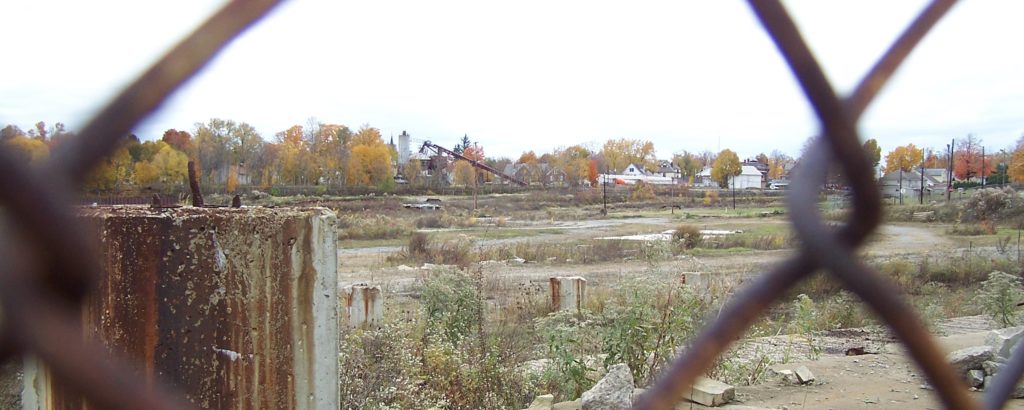 Vacant lots in urban areas are all potential brownfield sites, which may be phytoremediated via industrial hemp by a state Voluntary Cleanup Program (VCP) for future development of green spaces or community gardens. A main struggle for starting urban farming businesses seems to be fertile, healthy soil- the state of the ground’s health and its requirements for revitalization discourage one’s initiative for garden growth. Brownfield development in conjunction with industrial hemp will eliminate the first step for urban gardeners’ careers. Proposed here is a phase-oriented restorative research framework on using higher education institutes to do research on hemp as a phytoremediator on urban brownfields, which will facilitate creation of green spaces and urban gardens for local communities. However, to begin cultivating these opens spaces for gardening use, these spaces need to be cleared. These communities will require equipment to complete these tasks, such as gardeners, rakes, weed whackers, and leaf blowers, some of which could be viewed from online reviews similar to this Echo PB-580T Backpack Blower Review as well as other places online.
Vacant lots in urban areas are all potential brownfield sites, which may be phytoremediated via industrial hemp by a state Voluntary Cleanup Program (VCP) for future development of green spaces or community gardens. A main struggle for starting urban farming businesses seems to be fertile, healthy soil- the state of the ground’s health and its requirements for revitalization discourage one’s initiative for garden growth. Brownfield development in conjunction with industrial hemp will eliminate the first step for urban gardeners’ careers. Proposed here is a phase-oriented restorative research framework on using higher education institutes to do research on hemp as a phytoremediator on urban brownfields, which will facilitate creation of green spaces and urban gardens for local communities. However, to begin cultivating these opens spaces for gardening use, these spaces need to be cleared. These communities will require equipment to complete these tasks, such as gardeners, rakes, weed whackers, and leaf blowers, some of which could be viewed from online reviews similar to this Echo PB-580T Backpack Blower Review as well as other places online.
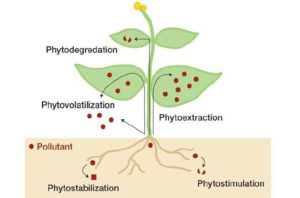 Brownfields redevelopment is a trademark of sustainable land use due to the economic and societal benefits of restoring an underused urban parcel being greater than similar development on greenfields. Goals of the smart-growth movement mesh well with those of brownfield redevelopment. Successful restoration of urban land includes integrated decision making, public involvement, and measureable outcomes for sustainability embodied in program designs. A challenge of brownfields redevelopment is the enormity of such a task- a 2004 report by the National Association of Local Government Environmental Professionals (NALGEP) and the Northeast-Midwest Institute (NEMW) predicts that there could be as many as one million brownfield sites nationwide.
Brownfields redevelopment is a trademark of sustainable land use due to the economic and societal benefits of restoring an underused urban parcel being greater than similar development on greenfields. Goals of the smart-growth movement mesh well with those of brownfield redevelopment. Successful restoration of urban land includes integrated decision making, public involvement, and measureable outcomes for sustainability embodied in program designs. A challenge of brownfields redevelopment is the enormity of such a task- a 2004 report by the National Association of Local Government Environmental Professionals (NALGEP) and the Northeast-Midwest Institute (NEMW) predicts that there could be as many as one million brownfield sites nationwide.
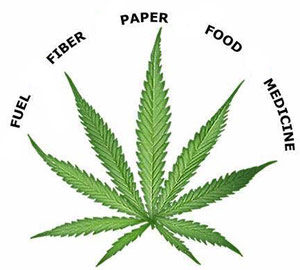 One acre of hemp has the ability to produce as much fiber as two to three acres of cotton. Little to no pesticides are used for hemp as well, and a single acre of hemp can produce as much paper as two to four acres of trees; hemp paper is also sturdier than tree paper, can be recycled more frequently, and requires fewer chemical inputs in manufacture. Harvest only comes after about 120 days. The plant’s intricate properties contribute to its four basic uses: food, fiber, fuel, and medicine.
One acre of hemp has the ability to produce as much fiber as two to three acres of cotton. Little to no pesticides are used for hemp as well, and a single acre of hemp can produce as much paper as two to four acres of trees; hemp paper is also sturdier than tree paper, can be recycled more frequently, and requires fewer chemical inputs in manufacture. Harvest only comes after about 120 days. The plant’s intricate properties contribute to its four basic uses: food, fiber, fuel, and medicine.
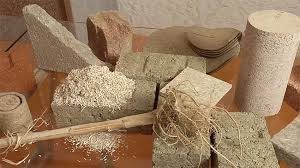 Fibers from hemp are extensively used in products including, but not limited, to fabrics and textiles, spun fibers (rope, yarn), paper, carpeting, home furnishings, construction and insulation materials, composites, and auto parts. Hurds, short and woody fibers in hemp’s stalk interior, are used for animal bedding, papermaking, composites and material inputs. Hemp seed and oilcake are useful in various foods and beverages, while having value as an alternative protein source. Oil from hemp seed is found widely in body-care items and nutritional supplements; the seed is also utilized as industrial oils, cosmetics, and pharmaceuticals. The global market for hemp may include more than 25,000 products in the nine submarkets: agriculture, recycling, automotive, textiles, food items, paper, construction materials, furniture, and personal care. A commonly overseen use for hemp, especially before the plant gets to manufacturing operations, is its usefulness in phytoremediation of contaminated soil.
Fibers from hemp are extensively used in products including, but not limited, to fabrics and textiles, spun fibers (rope, yarn), paper, carpeting, home furnishings, construction and insulation materials, composites, and auto parts. Hurds, short and woody fibers in hemp’s stalk interior, are used for animal bedding, papermaking, composites and material inputs. Hemp seed and oilcake are useful in various foods and beverages, while having value as an alternative protein source. Oil from hemp seed is found widely in body-care items and nutritional supplements; the seed is also utilized as industrial oils, cosmetics, and pharmaceuticals. The global market for hemp may include more than 25,000 products in the nine submarkets: agriculture, recycling, automotive, textiles, food items, paper, construction materials, furniture, and personal care. A commonly overseen use for hemp, especially before the plant gets to manufacturing operations, is its usefulness in phytoremediation of contaminated soil.
Overall, hemp plants are exceptional against heavy metals in soils, as shown by a study conducted in China. Eighteen cultivars of hemp were tested for tolerance and accumulation of cadmium (Cd) contaminated soils, screened for its potential bioenergy production in Cd-rich soils, and identified for its phytoremedial use. Results showed that all but three of the studied cultivars were considered to be good biodiesel crop candidates for phytoremediation in Cd contaminated soils. Research associates in Pakistan contributed further to deepen the knowledge pool research on hemp’s phytoremedial potential cadmium plus four other heavy metals.
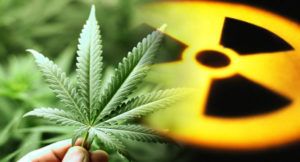 Hemp makes a premium candidate for phytoremediation due to high biomass, long roots and a short life cycle. Hemp also has a high capability to absorb and accumulate heavy metals (HMs) lead (Pb), nickel (Ni), cadmium (Cd), zinc (Zn), and chromium. Hemp was planted in the contaminated soils of the Chernobyl disaster site in the Ukraine, and it was revealed that the plant can take up considerable amounts of HMs from contaminated soil thanks to high biomass and deep roots. Another reported study elected hemp as the best bioaccumulator of Cd out of eight potential energy crops. In the future, the brownfields redevelopment industry may want to consider phytoremedial hemp as the starting tool for urban improvement, but progress does not stop here.
Hemp makes a premium candidate for phytoremediation due to high biomass, long roots and a short life cycle. Hemp also has a high capability to absorb and accumulate heavy metals (HMs) lead (Pb), nickel (Ni), cadmium (Cd), zinc (Zn), and chromium. Hemp was planted in the contaminated soils of the Chernobyl disaster site in the Ukraine, and it was revealed that the plant can take up considerable amounts of HMs from contaminated soil thanks to high biomass and deep roots. Another reported study elected hemp as the best bioaccumulator of Cd out of eight potential energy crops. In the future, the brownfields redevelopment industry may want to consider phytoremedial hemp as the starting tool for urban improvement, but progress does not stop here.
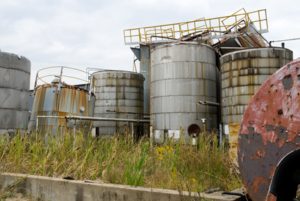 Hemp phytoremediation is a new potential first step in the process of brownfields redevelopment. Once the soil is detoxified, and the hemp is cleared, implementation of cover crops must ensue to nurture the soil. State voluntary cleanup programs (VCPs) and volunteers of the surrounding community must band together for the formation of green spaces. In a perfect world, the green space will either remain in place indefinitely, or be transformed into a garden for local food if a willing and qualified gardener shows interest. However, zoning laws will render transformation of a public botanical refuge to a food garden to be a cantankerous endeavor. It would be best to determine into what the brownfield will be converted during the project’s infancy. The EPA offers grants for tasks to make green-space creation possible. Regardless of whether a redeveloped parcel of urban land is rebirthed into green sanctuary in the concrete jungle, or becomes transformed into the community’s supply of local food, there is a broad acknowledgement that a good environment can enhance quality of life while advancing economic competitiveness.
Hemp phytoremediation is a new potential first step in the process of brownfields redevelopment. Once the soil is detoxified, and the hemp is cleared, implementation of cover crops must ensue to nurture the soil. State voluntary cleanup programs (VCPs) and volunteers of the surrounding community must band together for the formation of green spaces. In a perfect world, the green space will either remain in place indefinitely, or be transformed into a garden for local food if a willing and qualified gardener shows interest. However, zoning laws will render transformation of a public botanical refuge to a food garden to be a cantankerous endeavor. It would be best to determine into what the brownfield will be converted during the project’s infancy. The EPA offers grants for tasks to make green-space creation possible. Regardless of whether a redeveloped parcel of urban land is rebirthed into green sanctuary in the concrete jungle, or becomes transformed into the community’s supply of local food, there is a broad acknowledgement that a good environment can enhance quality of life while advancing economic competitiveness.
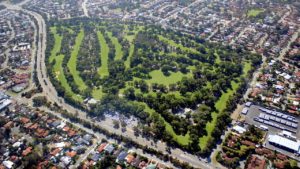 With the rise in urban population, cities must take initiatives to secure future quality of life and food supply with a focus on low income communities, as hierarchical oppression never disappears. Gardens, whether used for green space or food, are important for mental and psychological health for those who live in close proximity. Sprawling land-use patterns and fragmented governance inhibit localities’ abilities for smart-growth strategies and phase-oriented restorative research. Local and city governments must bring together the three tenants of sustainability into decision-making processes by necessity for future healthy food supply and physiological justice for urbanites. The Mayors Climate Protection Act (MCPA), endorsed by the U.S. Conference of Mayors, is in support of reducing sprawl, promoting transportation alternatives, supporting green buildings, and cutting city power use. Reason behind this event in June of 2005 was the view upon U.S. mayors that the federal government was failing to enact on climate change and conservation. Urban gardens fall under the MCPA by ameliorating a city’s dependence on imported food and condensing the spread of food sources
With the rise in urban population, cities must take initiatives to secure future quality of life and food supply with a focus on low income communities, as hierarchical oppression never disappears. Gardens, whether used for green space or food, are important for mental and psychological health for those who live in close proximity. Sprawling land-use patterns and fragmented governance inhibit localities’ abilities for smart-growth strategies and phase-oriented restorative research. Local and city governments must bring together the three tenants of sustainability into decision-making processes by necessity for future healthy food supply and physiological justice for urbanites. The Mayors Climate Protection Act (MCPA), endorsed by the U.S. Conference of Mayors, is in support of reducing sprawl, promoting transportation alternatives, supporting green buildings, and cutting city power use. Reason behind this event in June of 2005 was the view upon U.S. mayors that the federal government was failing to enact on climate change and conservation. Urban gardens fall under the MCPA by ameliorating a city’s dependence on imported food and condensing the spread of food sources
How Pennsylvania’s hemp industry will benefit.
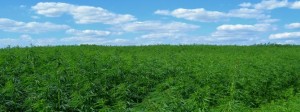 Urban soil phytoremediation will help the hemp industry get its restart in the two following manners: First, the plant will be advertised in densely populated areas for both its remedial qualities, and its use as starter tool for city improvement. Second, because of the potentially minuscule amount of profit made off of collaborative city-college research projects, Pennsylvania hemp will develop a philanthropic reputation against the pre-existing backdrop of an industrialized society which lauds wealth and materials. Once industrial hemp gets legalized for domestic commercial growth, mercantilism, and manufacture, the public would likely have the desire to support the hemp industry by buying their products. People will learn about the plant’s product potential with its dozens of uses, and they will cry out for commercial growth. Urban phytoremedial hemp will not be feasible for profit, but grown in multiple-acre fields, the resource will be a highly viable market in coming years.
Urban soil phytoremediation will help the hemp industry get its restart in the two following manners: First, the plant will be advertised in densely populated areas for both its remedial qualities, and its use as starter tool for city improvement. Second, because of the potentially minuscule amount of profit made off of collaborative city-college research projects, Pennsylvania hemp will develop a philanthropic reputation against the pre-existing backdrop of an industrialized society which lauds wealth and materials. Once industrial hemp gets legalized for domestic commercial growth, mercantilism, and manufacture, the public would likely have the desire to support the hemp industry by buying their products. People will learn about the plant’s product potential with its dozens of uses, and they will cry out for commercial growth. Urban phytoremedial hemp will not be feasible for profit, but grown in multiple-acre fields, the resource will be a highly viable market in coming years.
 To conclude, industrial hemp has a long, rigorous path ahead, and higher education institutions, state and city governments, local communities, non-profits, and Pennsylvania’s hemp industry must collaborate to foster a needed renaissance of urban life. Despite hemp having a long road ahead however, there
To conclude, industrial hemp has a long, rigorous path ahead, and higher education institutions, state and city governments, local communities, non-profits, and Pennsylvania’s hemp industry must collaborate to foster a needed renaissance of urban life. Despite hemp having a long road ahead however, there
are plenty of online e-stores that are selling, for instance, hemp oil. One such instance of an online shop for hemp oil is Green Roads World. Also, multidisciplinary approaches must be made, and the state must think critically in its implementation of this revitalized crop to avoid corruption and scandal. End products of industrial hemp will exceed the expertise of every party involved; risks must be taken, money must be spent, and the public must be educated. Life, liberty, and the pursuit of happiness is the United States’ founding principle; if the government exists to protect the peoples’ three basic rights, it must also implement economy, environment, and social justice. Physical health brings about life and happiness, so when the tools and resources exist to fix the lack of urban residents’ accessibility for life and happiness, but the government fails to enact, then two entities occur: 1.) The government has failed its people, and 2.) Responsibility has been placed on smaller political bodies at the origins and sinks of injustice to help bring about a new era of equality.
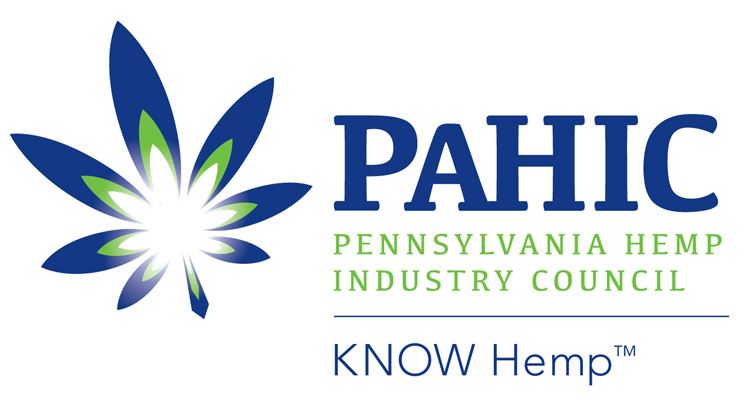
The biggest obstacle in motivating to start and maintain a food garden is lack of soil richness and friability. Hemp appears to be an excellent crop to add needed compostable organic matter to soil. Richly composted soil makes weeding much easier, and weeding is probably the most daunting aspect of gardening. I look forward eagerly to the day hemp will be available for home and community gardens.
We couldn’t agree more! 🙂
I totally agree!!!!